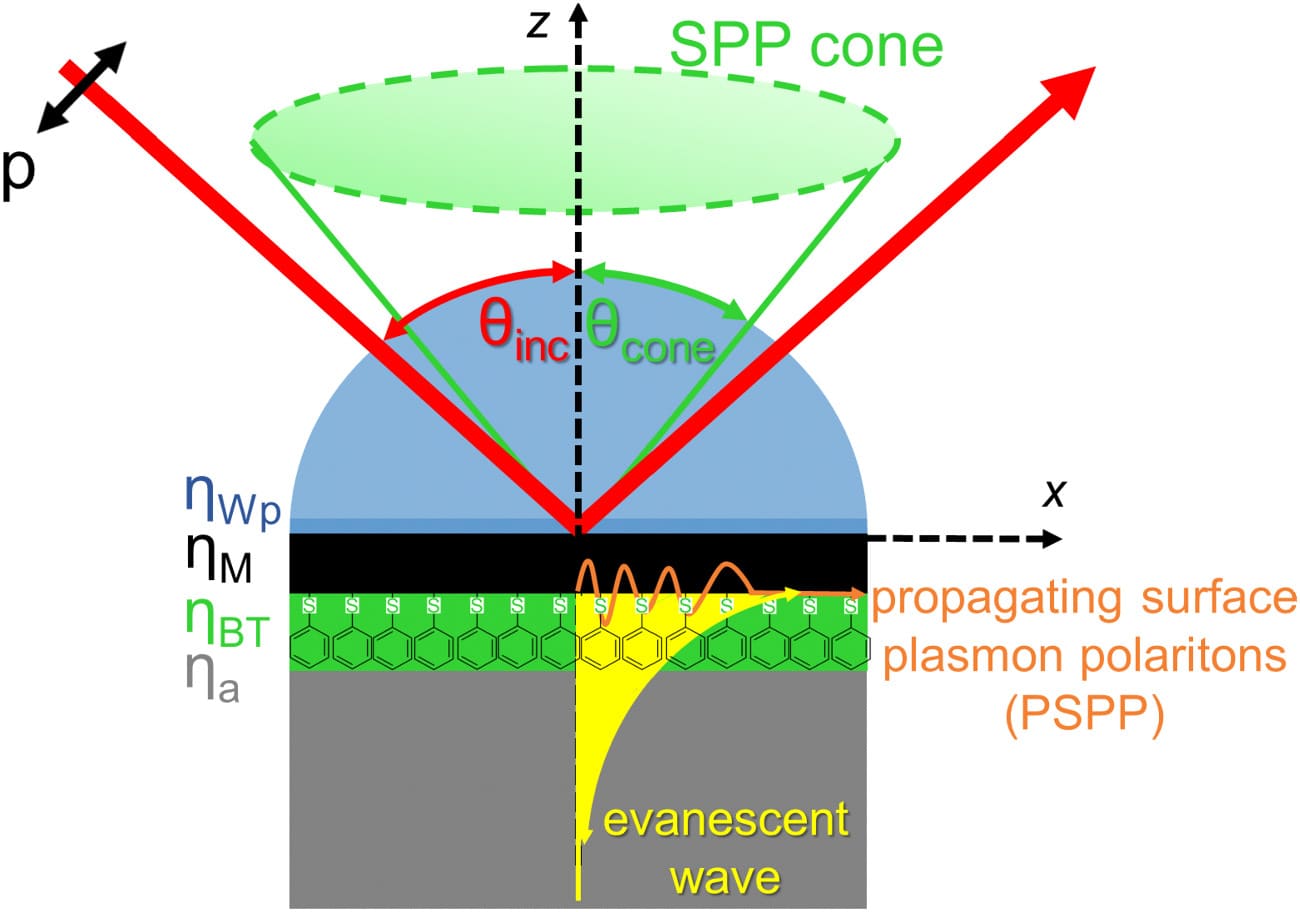Raman Scattering of the Sulfur Bond at Metal Surfaces
A research study from Iowa State University explored the potential of using directional Raman scattering spectroscopy to characterize self-assembled monolayers (SAMs) deposited on gold (Au) and silver (Ag) surfaces. SAMs are formed by absorption of organic thiols (R-SH) on metal surfaces and are used in microelectronic applications requiring precise surface patterning of metal films.
When compared to surface-enhanced Raman spectroscopy (SERS), directional Raman Scattering spectroscopy has been shown to provide a more accurate SAM characterization. This study measured the SERS signal from a synthesized N-(6-mercapto)hexylpyrindinium chloride monolayer on roughened Au and Ag surfaces. The type of monolayer and the number of Au-S binding units on the gold clusters influenced the SERS spectra by shifting Au-S bands to higher frequencies. It was additionally found that the Au-S vibrational region can span from 220 to 350 cm-1 due to stretching vibrations. Tangential Au-S vibrational bond displayed a weaker Au-S bond compared to radial vibrations. Results confirmed that Au-S stretching mode shifts to a higher frequency compared to Ag-S bands due to the shorter bond and stronger affinity between the gold surface and sulfur group.

The metal-sulfur vibrational bond of a benzenethiol monolayer on smooth gold and silver surfaces was evaluated using directional Raman scattering. Of the metal films tested in this study, the smooth planar gold film was metal deposited by Platypus Technologies. A 2-nm titanium adhesion layer was deposited onto a gold film. A benzenethiol solution was used to create SAMs onto the metal films.
Electromagnetic waves known as surface plasmon polaritons (SPPs) are produced when the excitation light is at a specific incident angle. This can in turn cause Raman scattering within the molecules absorbed on the metal film. An SPP cone can occur when Raman scattered light excites SPPs. In this work, a Weierstrass prism was used to collect the scattered light generated within the SPP cone. The directional Raman signal produced from the SPPs cone for each film was obtained. All metal films generated strong directional signals and SPP cone angles were determined before and after benzenethiol absorption.
Results indicated that incident and SPP cone angles significantly increased after immobilizing a benzenethiol monolayer. The Au-S bond on the gold film also had an increased peak intensity after immobilizing benzenethiol. To indicate accurate directional Raman signals, incident angles collected from the experiment were compared with calculated sum squared electric field and reflectivity calculations. The accuracy resulted in ±0.01°, illustrating an accurate signal generation.
In conclusion, directional Raman scattering can allow monolayers to be characterized on smooth gold and silver surfaces.
Platypus Technologies offers a range of metal deposition services. Highly pure, uniform, and smooth films are produced through E-beam evaporation. Metal deposition occurs in a highly controlled cleanroom that prevents potential nanoparticle contamination.
Reference:
Directional Raman scattering spectra of metal–sulfur bonds at smooth gold and silver substrates